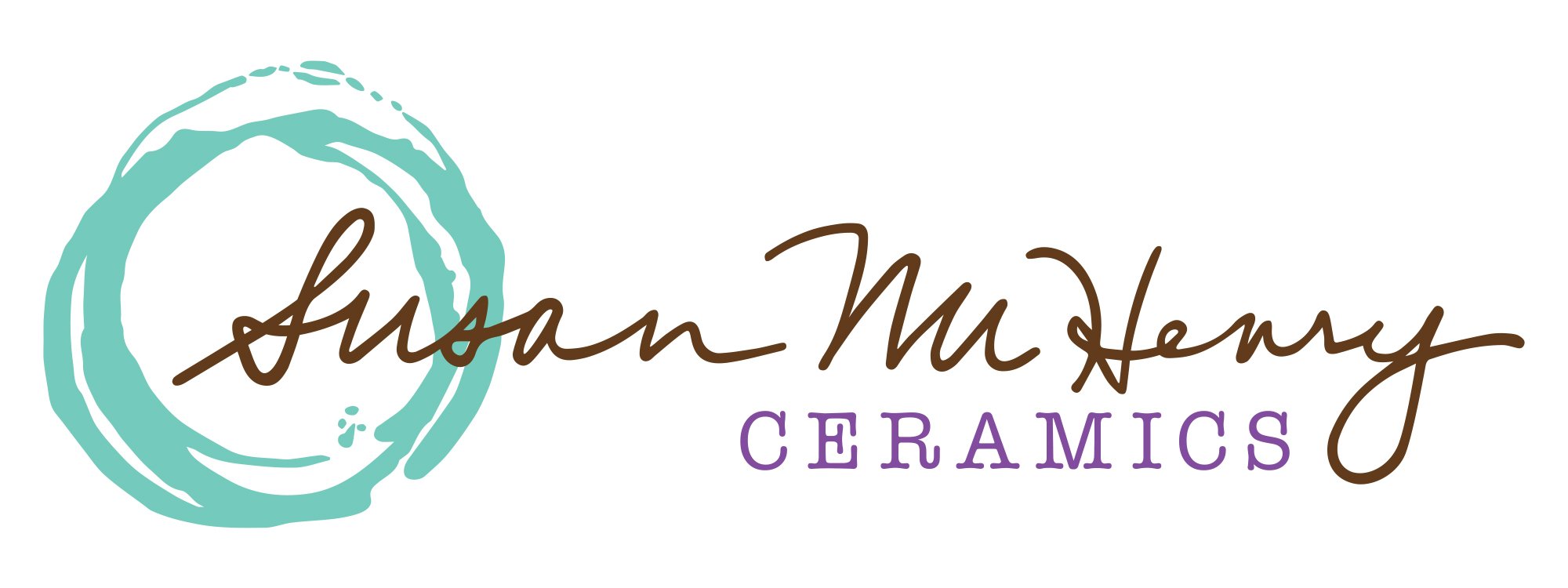Steps to Making and Decorating an Earthenware Pot
1. Make a lovely pot.
2. When it is leather hard, dip it in white slip (or you can pour the slip, spray, or brush it on). The use of the white slip is not necessary, but many people like the way it offers a background for layering of colored slips. If you’d like, you can bypass step 2 and go straight to step 3. Use an N95 filter mask or respirator if you spray!
Note: Commercial underglazes can be used in lieu of slip. Some clay companies also sell slip in the dry state that you can mix with water if you’re not interested in purchasing raw materials to mix your own slip.
3. Once the white slip has dried (if you are using it) and while the pots is still leather hard, layer the pot with colored slips, if desired. Sgraffito work or carving can also be done at this stage.
4. If you will be firing your pots to cone 03, when the pot is bone dry, apply terra sigillata to any areas of the pot that will not be glazed (e.g., foot rings). Terra sigillata can also be used aesthetically on unglazed areas (e.g., the bottom portion of a mug or cup or the edge of a dish or bowl). It leaves behind a nice satin finish.
5. Bisque fire your pot.
6. Dip the bisque fired pot in a clear glaze appropriate for low-fire. Traditionally, earthenware is glaze fired to cone 03, though some clay bodies can be fired as high as cones 1-2. Test your clay body to see what it can handle and what results you like best. Glaze, slip, and terra sigillata recipes can be found online at ceramicartsnetwork.com or at glazy.org.
7. Use your finished pottery! We learn the most from our pots when we use them and see what we like and don’t like about them.
Troubleshooting Tips
Here are some considerations when working with slips at the leather hard stage:
· Timing is everything. Once a pot begins to dry (you’ll note a color change, typically on the rims first), you can encounter problems with the slip popping off the pot after the glaze firing. In my experience, certain colors are more prone to this than others. If you’re concerned you won’t be able to decorate your leather hard pots right away, you might consider making a damp box to store your pots until you can decorate them. Another option is to use commercial underglazes in lieu of slips since those can be applied at any stage (leather hard, bone dry, or bisque).
· When slab building, slip will appear as though it is “cracking” at seam lines, particularly on the bottom of a pot. Adding a coil can help eliminate this defect. Or applying slip at the bisque stage is another option. Be sure to find a slip recipe formulated specifically for applying to bisque, as the shrinkage rate will be different from other slip recipes.
VICTORIA CHRISTEN’S WHITE SLIP
This slip is very versatile and can be applied to wet, soft leather-hard,
or leather-hard clay, depending on application method.
EPK 34
Ball Clay 34
Silica 26
Talc 6
For color: add 10-15% Mason stain for desired level of color.
I mix a large batch of white slip, and then mix colored slips by adding 1-2 tbsp. stain and equal parts frit (by weight) for desired level of intensity per one cup of base slip.
To create my surfaces, I mix the white slip to a cream-like consistency and dip or pour on leather-hard pots as a background. I also keep a batch of thick white slip on hand for brushing. Once dry, I brush on layers of colored slips. I bisque fire to cone 07.
NAPLES-WAGNER SATIN CLEAR GLAZE (cone 1-2 oxidation)
Frit 3134 28.6
Frit 3110 3.9
Lithium Carbonate 5.3
Wollastonite 34
EPK 25.8
Silica 2.4
Add:
Black Iron Oxide 0.48
Yellow Ochre 0.48
Note: I omit the oxides in my version of this recipe. The specific gravity should be 1.44, though I’ve decreased this to 1.41 to compensate for the lower bisque temp I’m using (cone 07). You’ll have to adjust appropriately depending on your bisque temperature. Satin crystals form in the cooling process, between 1900°F and 1400°F (1038°C and 760°C), so if you have a computer-controlled kiln, fire down at a rate of 100°F per hour between those two temperatures. Fire to a solid cone 2 for best results. Note that this glaze will create a running effect with underlying slips or underglaze due to the lithium.
